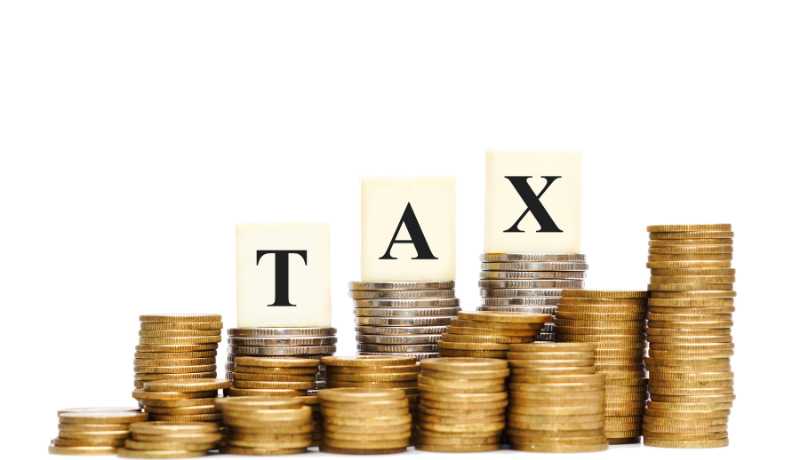Profits or gains arising from sale of a capital asset are called “Capital Gains” and are charged to tax under the head “Income From Capital Gains”. There are two types of capital gain as follows:
(1). Long Term Capital Gain (LTCG) –
Capital Gain is termed as long term if the asset is held for greater than specified period of time. The period is as follows:
a) 2 Years for Immovable Property & Unlisted Shares of Company
b) 3 years for debt mutual fund, gold investment & any other assets
c) 1 year for stocks, equity oriented mutual funds, listed debentures or government securities, zero coupon bonds & units of business trust
(2). Short Term Capital Gain (STCG) –
Capital Gain is termed as short term if the asset is held for less than specified period of time. The period is as follows:
a) Less than 2 Years for Immovable Property & Unlisted Shares of Company
b) Less than 3 years for debt mutual fund, gold investment & any other assets
c) Less than 1 year for stocks, equity oriented mutual funds, listed debentures or government securities, zero coupon bonds & units of business trust
Rates at which capital gains are calculated –
As per the nature of capital gain, calculation of capital gain tax is done. It might be Long Term Capital Gains (LTCG) or Short Term Capital Gains (STCG).
(A). Taxation of LTCG as follows –
a) On Immovable Property & Unlisted Shares of Company – LTCG @ 20% with indexation benefit u/s 112 plus Surcharge (if applicable) plus 4% Cess
b) On debt mutual fund, gold investment & any other assets – LTCG @ 20% with indexation benefit other than u/s 112 plus surcharge (if applicable) plus 4% Cess
c). Finance Act, 2018 inserted a new Section 112A from assessment year 2019-20, as per this new section capital gain arising from transfer of a long-term capital assets being an equity share in a company, equity oriented mutual funds, units of business trust shall be taxed @ 10% exceeding Rs 1,00,000 u/s 112A.
Here, Grandfathering Value concept will apply to give higher exemption from cost of acquisition if shares or mutual fund is purchased before February 1, 2018. Cost of Acquisition of a listed equity share or mutual fund purchased by the taxpayer before February 1, 2018, shall be deemed to be higher of the following:
i) Actual cost of acquisition of such asset, or
ii) Lower of the following:
1) Fair Market Value (FMV) of such shares as on January 31,2018, or
2) Actual sales consideration accruing on its transfer
Note –
– FMV of listed equity share shall mean its highest price quoted on the stock exchange as on January 31, 2018. However, if there is no trading in such shares on January 31, 2018, the highest price of such share on a date immediately preceding January 31, 2018 on which trading happens in that share shall be deemed as its fair market value.
– In case of units which are not listed on recognized stock exchange, the net asset value of such units as on January 31, 2018 shall be deemed to be its FMV. In a case where the capital asset is an equity share in a company which is not listed on a recognized stock exchange as on 31-1-2018 but listed on the date of transfer, the cost of unlisted shares as increased by cost inflation index for the financial year 2017-18 shall be deemed to be its FMV.
d). LTCG arising from transfer of specified asset – A taxpayer who has earned long-term capital gains from transfer of any listed security or any unit of UTI or mutual fund (whether listed or not), not being covered under Section 112A & zero-coupon bonds shall have the following two options:
i) avail of the benefit of indexation; the capital gains so computed will be charged to tax at normal rate of 20% (plus surcharge (if any) & 4% cess.
ii) do not avail of the benefit of indexation; the capital gain so computed is charged to tax @ 10% (plus surcharge (if any) & 4% cess.
Selection of the option is to be done by computing the tax liability under both the options & the option with lower tax liability is to be selected.
(B). Taxation of STCG as follows –
a). Section 111A is applicable in case of STCG arising on transfer of equity shares or units of equity oriented mutual-funds or units of business trust, STCG u/s 111A is charged to tax at 15% (plus surcharge (if any) & 4% cess).
Note-
Equity oriented mutual fund means a mutual fund specified under section 10(23D) & 65% of its investible funds, out of total proceeds are invested in equity shares of domestic companies.
b). STCG not covered under section 111A:
i) STCG arising on sale of equity shares other than through a recognized stock exchange
ii) STCG arising on sale of shares other than equity shares
iii) STCG arising on sale of units of non-equity oriented mutual fund (debt oriented mutual funds)
iv) STCG on debentures, bonds and Government securities
v) STCG on sale of assets other than shares/units like STCG on sale of immovable property, gold, silver etc.c) Normal STCG, i.e., STCG other than covered under section 111A as mentioned in above 5 points is charged to tax at normal rate of tax which is determined on the basis of the total taxable income of the taxpayer.
Adjustment of STCG u/s 111A, LTCG u/s 112A & LTCG u/s 112 against the Basic Exemption Limit (BEL) –
Only a Resident Individual and HUF can adjust the exemption limit against STCG u/s 111A, LTCG u/s 112A & LTCG u/s 112. Thus, a non-resident individual/HUF cannot adjust the BEL against STCG u/s 111A, LTCG u/s 112A & LTCG u/s 112.
A resident individual/HUF can adjust the STCG u/s 111A, LTCG u/s 112A & LTCG u/s 112 against the BEL but such adjustment is possible only after making adjustment of other income.
In other words, first income other than STCG u/s 111A, LTCG u/s 112A & LTCG u/s 112 is to be adjusted against the exemption limit & then the remaining limit (if any) can be adjusted against STCG u/s 111A, LTCG u/s 112A & LTCG u/s 112.
Deduction under section 80C to 80U under STCG u/s 111A, LTCG u/s 112A & LTCG u/s 112 –
No deduction under sections 80C to 80U is allowed under against STCG u/s 111A, LTCG u/s 112A & LTCG u/s 112. However, such deductions can be claimed from STCG other than covered under section 111A.
Maximum Surcharge applicable in case of STCG u/s 111A, LTCG u/s 112A, LTCG u/s 112 & LTCG other than u/s 112 –
Surcharge on STCG u/s 111A, LTCG u/s 112A, LTCG u/s 112 & LTCG other than u/s 112 has been capped at 15%.
An individual & an HUF have to pay surcharge calculated on tax liability which is over & above their base tax liability if the taxable income exceeds ₹50 lakh. The rate at which surcharge is payable is based on slab of the taxpayer’s income. Higher the income slab higher is the rate of surcharge.
Presently the surcharge on STCG u/s 111A, LTCG u/s 112A, LTCG u/s 112 & LTCG other than u/s 112 included in your income is capped at maximum of 15% even if otherwise you are liable to pay surcharge at higher rate on other income which may go up to 25% & 37% surcharge if total income of Individual & HUF exceeds specified income limit. Now, this cap of 15% is now been extended to all long-term capital gains i.e., LTCG u/s 112A, LTCG u/s 112 & LTCG other than u/s 112 from 1st April, 2022 in Union Budget 2022.
From FY 22-23, 15 per cent surcharge cap has now become applicable on LTCG tax on real estate property, physical gold, debt funds, debentures etc. as well.
Set off & Carry Forward rules of LTCG & STCG –
Long-term capital loss (LTCL) cannot be set off against any income other than income from long-term capital gain (LTCG). However, short-term capital loss (STCL) can be set off against both long-term capital gain (LTCG) or short-term capital gain (STCG).
Before making inter-head adjustment, the taxpayer has to first make intra-head adjustment. Loss under head “Capital gains” whether Short term capital loss or Long term capital loss cannot be set off against income under other heads of income.
Provisions related to carry forward of capital loss –
If loss under the head “Capital gains” incurred during a year cannot be adjusted in the same year, then unadjusted capital loss can be carried forward to next year. In the subsequent years, such loss can be adjusted only against income chargeable to tax under the head “Capital gains”, however LTCL can be adjusted only against LTCG. STCL can be adjusted against LTCG as well as STCG.
Such loss (both STCL & LTCL) can be carried forward for 8 years immediately succeeding the year in which the loss is incurred. Such loss can be carried forward only if the return of income/loss of the year in which loss is incurred is furnished on or before the due date of furnishing the return, as prescribed under section 139(1).
Loss from exempted source of income cannot be adjusted against taxable income – If income from a particular source is exempt from tax, then loss from such source cannot be set off against any other income which is chargeable to tax.
For example – Agricultural income is exempt from tax, hence, if the taxpayer incurs loss from agricultural activity, then such loss cannot be adjusted against any other taxable income.
Disclaimer: The information contained in this website is provided for informational purposes only, and should not be construed as legal/official advice on any matter. All the instructions, references, content, or documents are for educational purposes only and do not constitute legal advice. We do not accept any liabilities whatsoever for any losses caused directly or indirectly by the use/reliance of any information contained in this article or for any conclusion of the information.









